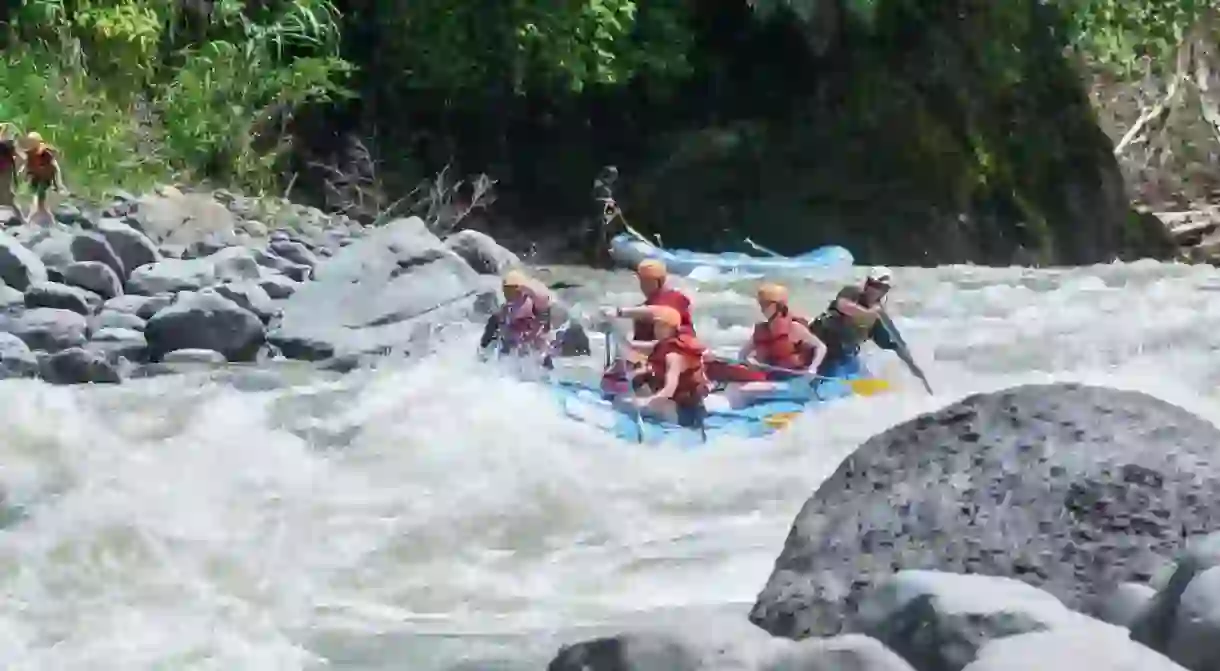Five Best Eco-Tourism Activities in Costa Rica

Enjoy the best parts of Costa Rica in the knowledge that you’re being environmentally friendly, boosting the local economy and preserving traditions.
Eco-tourism is all about being a conscious traveller, visiting destinations with an aim to preserve the local culture, environment and boost the economy. With that in mind, these are five activities in which you can achieve all these things whilst also having heaps of fun.
Oxcart factory, Sarchi
High up in the cloud forests of Costa Rica, you’re likely to spot farmers walking alongside cattle, pulling colourful carts containing sugarcane and coffee beans – a snapshot into the country’s transportation history. You’re also going to see replicas wherever you go, be it restaurants or hotels. Find out more about this element of Costa Rican history at the factory, which was opened in 1923 by visionary engineer Eloy Alfaro, who created a system that uses water from the river to produce hydroelectricity, which powers the tools to carve the wood. Watch artists hand-paint the iconic, intricate designs onto the carts and who knows, you might even want to buy yourself one from the gift shop (or maybe something smaller, like a mug with the same hand-painted design). By helping to pay the salaries of the staff at the factory, you’re helping to preserve an integral tradition of Costa Rica.
River rafting and ant colony, Sarapiqui

This may sound like a strange combination, but it will all make sense when you get there. The 85km-long (53mi) Sarapiqui that meanders through the rainforests of the Braulio Carrillo National Park is considered one of the most important rivers in the country, and what better way to see it than on a rubber raft, racing down its rapids? On the calmer parts of water you can scan the river bank and trees to spot howler monkeys, sloths, herons and all the wildlife Costa Rica is synonymous with. The rafting company Aguas Bravas ends the two-hour voyage at its eco centre, where you’ll be fed the country’s traditional lunch of Casado. After much-needed food, Leo Herra of Hormigas Town shows you his ant colony, where he studies the insects and has made ground-breaking discoveries on their behaviours. By paying Aguas Bravas for the adrenaline-fuelled joy of rafting, you are funding a company that supports local environmental projects and works to preserve the river. Don’t just take my word for it, the activity is a Blue Flag programme, which means it’s recognised and certified by Costa Rican authorities for its efforts to protect the surrounding environment.
Zip lining tour, Arenal

How does soaring above rainforest canopies with an active volcano in the backdrop sound? That’s exactly what you get on Arenal’s tour, made up of 13 different routes. It’s also one of the best ways to get up close and personal with the animals that call the treetops their home. To get to the top of the canopy, where the zipline starts, a silent gondola run solely on electricity cuts through the vertical walls of vegetation, where you’ll get the best selfie opportunities with the steaming volcano that last erupted in 1997. Then comes the exhilarating tour through the trees. You can do this activity in the knowledge that the infrastructure to support the zip lines didn’t require deforestation or any habitat destruction. If it’s not this exact route you take, there are several other options dotted across the country. The World Bank praised Costa Rica as “the only tropical country in the world that has reversed deforestation.” This incredible accomplishment stands as a model to other countries whose ecosystems are suffering from deforestation. It also creates economic opportunities for remote areas. Locals who may have only had access to agricultural jobs also have the potential to earn a living in the tourism industry.
Tortilla making and farm tour, Arenal
At Vida Campesina – an organic farm and educational centre, preserving Costa Rican traditions – you get the chance to tour around its farm to see and taste the produce yourself. There’s no fresher way to experience the flavours of Costa Rica. Exotic fruits grown at the farm include cocoa, papaya and anato. They also grow herbs (oregano, basil, lemongrass), vegetables and raise their own livestock – from pigs to cattle. Once you’ve picked the ingredients yourself, you take them back to the kitchen to cook tortilla in the traditional method, make picadillo – a Costa Rican vegetable salad – enjoy a hearty, homegrown plate of Casado and drink coffee picked and roasted from the farm (it’s the best I’ve ever tasted). Why this activity is sustainable doesn’t need much explanation, it is the epitome of the word, living off the land without over producing. And yet another way to preserve traditional methods.
Canal wildlife tour, Tortuguero

Tortuguero National Park is accessible only via boat or air and can be stayed in for a maximum of two days and three nights – even if you’re the Queen, our tour guide told us. Whether you’re planning to stay for the time limit or just the day, you must take a slow boat along the winding canals – depositories of the murky brown Lucky River – that cut through dense rainforest. The Park assigns you a canal to limit the amount of boats that go down them. Along them, the sounds and sights of “true Torugero” are overwhelming: pass through a corridor of arching vegetation to a soundtrack of deep prehistoric howler monkey groans and tweeting toucans. All manner of wildlife can be spotted, from sloths to baby crocs. If you have time to venture into the town for a drink, it’s worth checking out the woman-run recycling centre that makes tourism to the area viable.
Head over to Visit Costa Rica to find out more about this wonderful country.
Join us for an eight-day adventure on our Real Costa Rica trip, which includes white-water rafting, a sloth safari and a waterfall hike in Arenal.













